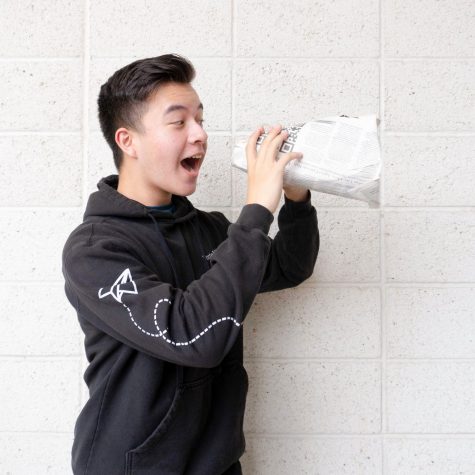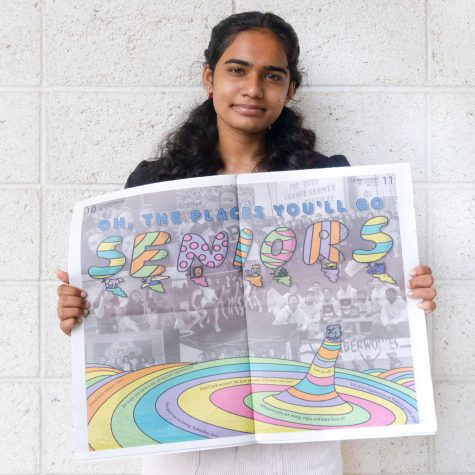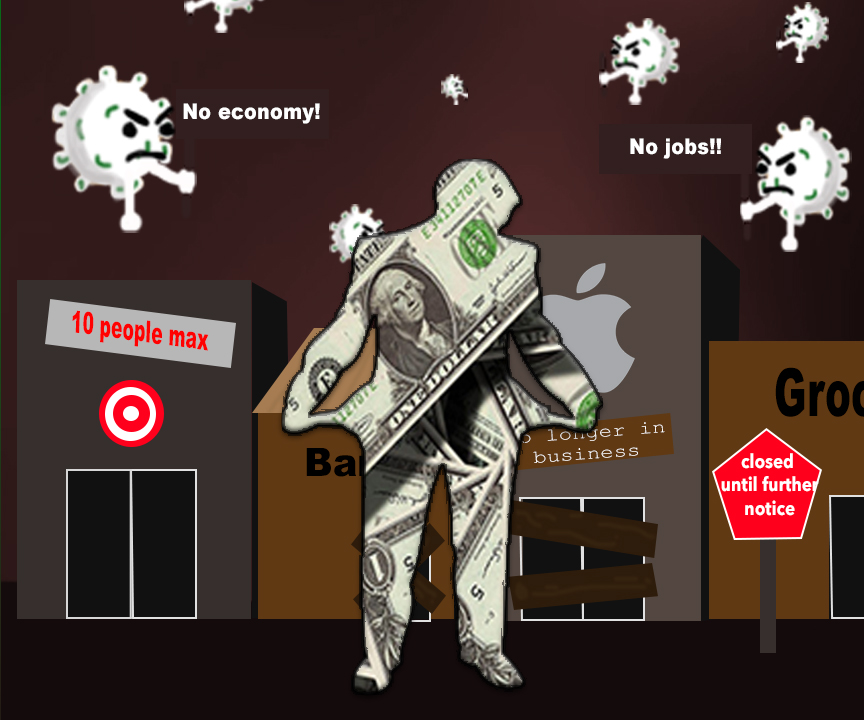A Failed Economy Will Be More Detrimental Than COVID-19 Itself
Unemployment within the United States stood at 18 percent on April 16, comparable to nearly 25 percent during the Great Depression in the 1930s.
As nearly 90 percent of the United States remains in an economic standstill, jobless claims soared past 22 million on April 16, marking the highest unemployment rate since the Great Depression.
Meanwhile, gross domestic product (GDP) has dropped by a substantial 34 percent, the lowest point since World War II according to CNBC.
Economic trends predict even further losses in upcoming weeks, making one thing clear — Americans need work. Now.
While state lawmakers are only beginning to take steps to reopen the labor market, COVID-19 continues to ravage the American economy and the mental health of many individuals, posing a threat far greater than the disease itself.
Human lives are invaluable. However, many people fail to recognize that a prolonged economic downturn will lead to abundantly more deaths — and not purely because of a lack of healthcare resources.
During the Great Recession of 2008, nearly 10,000 lives were taken in what was deemed “economic suicide,” which many sociologists attribute to stresses of unemployment and considerable market losses, according to a study conducted by the University of Oxford. The added weight of social isolation poses concerns of a future mental health crisis within the United States.
“I worry about students being stressed and anxious during quarantine because there’s so much unknown right now,” psychology teacher Katie Wi said. “When people feel that things are out of their control, there is potential for serious negative health effects. Students can take care of their mental health during this stressful time by focusing on what they can control.”
Newly-implemented stay-at-home orders have also placed immense financial stress on name industries, including retail, air transport, entertainment and real estate.
Despite politicians’ attempts to reboot the American economy by the summer, researchers from Harvard T.H. Chan School of Public Health believe closures will persist through 2022 or until a vaccine is found. The extended period of economic lull will ultimately thwart any chance at economic recovery for months or years to come.
Students will be among those most significantly impacted by economic repercussions, as depressive conditions have already forced employers and academic institutions to be more selective with their career and extracurricular offerings.
Due to an overwhelming demand for jobs and students’ entry-level experience, students will likely be low-priority in the job application process.
“I see a possibility of not being able to find employment opportunities or extracurricular activities to take part in, and seeing as I’m a senior, I realize that my opportunities to make lasting memories in these jobs and clubs is severely limited,” senior Jason Chen said. “I am somewhat concerned and aware of the impact of COVID-19 on the economy and many opportunities I might otherwise have. I pray I’m not wrong that everything will be back to normal, whatever the new standard for normal is.”
Millennials were labeled the “Lost Generation” for their inopportune entrance into the workforce during the Great Recession of 2008. They not only faced statistically fewer opportunities for job growth at the time, a period that peaked at 10.2% unemployment, but also accumulated 20% less wealth than their older counterparts in 2019, according to CNN.
Now that the United States’ economy is in even worse condition today, will the same denomination be made for Gen-Zers entering the workforce?
This is precisely why the American economy needs to reopen — starting now. As detailed in “Opening Up America Again,” a newly-unveiled white house document verified by public health officials and offering a three-phased approach to reopening the economy, the areas least affected by or recovering from COVID-19 should ease into resumption of normal business practices.
The document provides specific criteria for cities to meet prior to reopening, determining if there are clear signs of recovery from COVID-19 and if economic resurgence is viable.
Phase one and two outline the necessary precautions for individuals and employers to take while in recovery, such as providing accommodations for the vulnerable population and limiting nonessential travel.
Phase three illustrates total economic and social recovery from COVID-19 and plans to take effect in the least impacted areas by May 1.
“Extreme measures to flatten the virus ‘curve’ is sensible — for a time — to stretch out the strain on health infrastructure,” former Goldman Sachs CEO Lloyd Blankfein said on Twitter. “But crushing the economy, jobs and morale is also a health issue — and beyond. Within a very few weeks let those with a lower risk to the disease return to work.”
Amid the economy versus public health debate, COVID-19’s detrimental effects on American and international markets beg the question as to whether restrictions on public movement will be beneficial to the economy — and general well-being — in the long-term.
In the end, one thing is definitive. Americans need to be able to work. And soon.
Your donation will support the student journalists of Portola High School. Your contribution will allow us to purchase equipment and cover our annual website hosting costs.

Ryne Dunman is the Co-Editor-in-Chief for his second and final year on the Portola Pilot. This year, he’s excited to make new memories in-person and...

Dheeksha Bhima Reddy is the co-Editor-in-Chief for her third and final year on the Portola Pilot. Through her newfound obsession of drinking coffee (cold...




